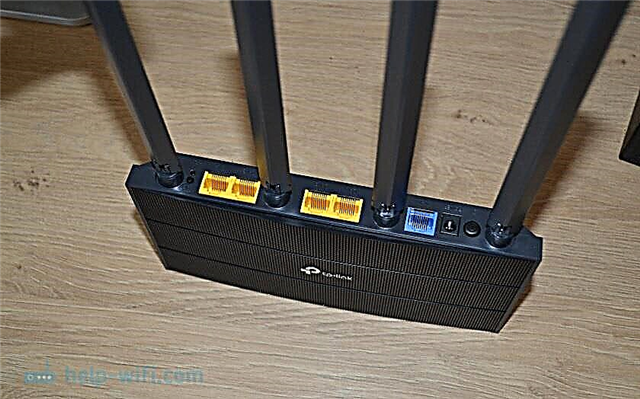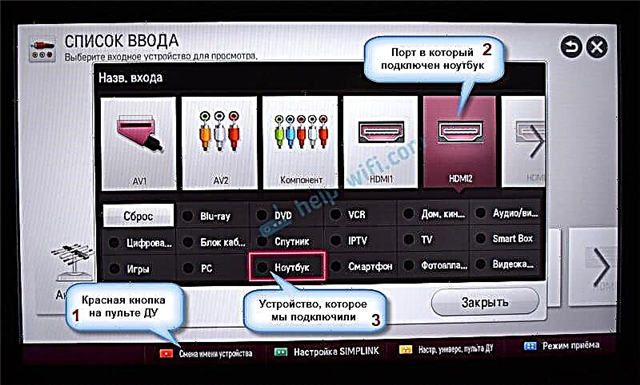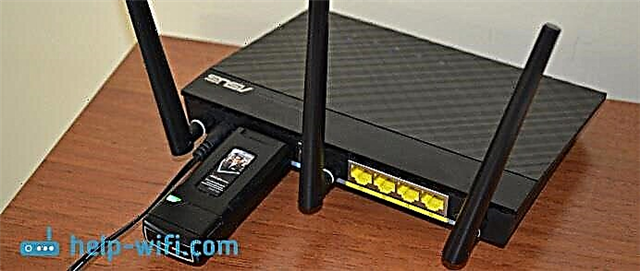In order to organize a Wi-Fi network in a private house, you will, of course, need an Internet connection, and the Wi-Fi router itself, which will already distribute the Internet to all your devices. If, for example, we compare a private house with an apartment, or some kind of office, then a special router or any other special equipment is not needed for the house. All the difference is that, in comparison with an apartment, a private house is usually located outside the city, where it is not always possible to connect an ordinary cable Internet.
Therefore, if you decide to make an Internet connection via Wi-Fi in your private house, and also via a network cable, then you first need to choose a method of connecting to the Internet, an operator (Internet provider), and then, already for a certain connection, you need to select Wi-Fi router. Well, private houses, as a rule, are much larger than ordinary apartments, and several floors. Therefore, most likely you will need to install not only one Wi-Fi router, but also a Wi-Fi network repeater, or several routers. For the Wi-Fi network to cover the whole house and all floors. Near a private house, there is usually also a courtyard where you can bask in the sun. Therefore, for many it is important that the Internet via Wi-Fi also works in the yard near the house.
It is in these moments that we will try to figure it out in the article. We will find out which Internet is better to connect to a private house, which router to choose, how to install it and make the Wi-Fi network work throughout the house. I think this is exactly what you need.
Let's divide the article into several sections:
- Internet connection in a private house: in the city, outside the city, or in the village. Choosing a connection method and an Internet provider.
- Choosing a Wi-Fi router for distributing the Internet wirelessly in a private house.
- Strengthening the Wi-Fi network in the house. What to do if Wi-Fi does not catch on all floors, and in the yard.
You can go directly to the required section. For example, if you already have the Internet connected, or you know which one to connect, then you can go straight to choosing a router.
What Internet to connect to a private house?
To connect your smartphones, tablets, laptops, and other devices to the Internet via Wi-Fi, you need to connect the Internet to the router that will distribute the wireless network. Therefore, first of all, you need to bring the Internet into the house. The most optimal Internet in terms of price / quality / speed is a regular Ethernet cable. Or, what else is there now, it seems that fiber is becoming a popular way to connect to the Internet. In the city, in the apartment, you can easily connect such an Internet. It is not expensive, but the speed is good there.
If your house is located in the city, or even outside the city, then you definitely need to find out if it is possible to connect cable Internet. You can ask your neighbors if they already have the Internet connected, and you can bring the same to your house. First of all, you need to find out what method of connection is generally possible in your area.
Let's look at different connection technologies, let's start with the most optimal ones:
- Usual cable internet (Ethernet), or fiber optic. It is imperative to find out if it is possible to extend such a cable into your house.
- ADSL internet... Telephone connection. If you have a landline phone, you can check with your operator if they provide an internet connection in your community.
- Wireless 3G, 4G LTE internet via USB modem. In most cases, this is the only way to connect to the Internet in a private home. Especially if your house is located in a village where there is no cable Internet connection. Internet from a USB modem can also be distributed via Wi-Fi, everything works fine. All you need is a special router. Consider this issue below in the article.
- InnerFeed and AirMax... For example, in Ukraine, the Intertelecom provider offers the "Home Internet Wi-Fi" service. To be honest, I don’t know which providers provide such a connection in Russia and in other countries. This type of connection is much better than a USB modem. The speed is better, and most importantly, more stable. And the tariffs are cheaper. Cons: expensive equipment (antenna), and you need a line of sight with the tower. Therefore, the coverage is still not very large.
- Satellite Internet for a private house. To be honest, I'm not very good at it. I know that it is very expensive, difficult, and there is nothing good in it. Therefore, I will not consider it. Not the most popular connection.
It seems to me that 4G Internet now works better than ADSL, for example. It's up to you to choose. Look at tariffs, connection speed.
Most likely, you will be connecting 3G, 4G LTE internet. See what the operators offer, what tariffs and coverage are there. It is advisable to choose the operator with the best coverage in your area. If your area has a very poor 4G signal, or even 3G, then you will need to install a special antenna. But, the operator, whose services you want to use, will already tell you.
I think we figured out the connection to the Internet in a private house. The ISP may offer you a modem, or a Wi-Fi router that will distribute a wireless network. If they do not have such a service, or the proposed equipment does not suit you, then you will need to choose, buy and install a router yourself. We choose a router depending on the Internet that you have brought to your house. Well, do not forget about the area to which you need to distribute the Wi-Fi network, and about the load that the router must withstand.
Choosing a Wi-Fi router for a private house
Recently, I published a topical article with tips for choosing a router for an apartment or house. The article is large, detailed, you can read it.
Update: in large private houses, when one router is not enough, I recommend installing Wi-Fi Mesh systems. With their help, you can build one seamless Wi-Fi network throughout the house and even in the yard. You can expand the network by installing additional modules.
Routers are not divided into those for apartments, houses, offices, etc. The main thing is that the router supports the connection to the Internet, which is conducted to your house.
If the Internet via USB modem
If you have the Internet via a 3G / 4G modem, then you definitely need a router that supports USB modems. If the router has a USB port, this does not mean that it can connect to the Internet via a modem and distribute it via Wi-Fi. For choosing a router with support for USB modems, I wrote in the article: how to distribute the Internet via Wi-Fi from a 3G USB modem? Routers with USB modem support.
Everything is very simple: we connect the modem to the router, set the necessary parameters, and you're done. The router receives internet from the modem, and distributes it via Wi-Fi and cable. It looks something like this:

For example, you can also look at the instructions for setting up a TP-LINK router to work with a 3G modem, and setting up an Internet connection via a USB modem on an ASUS router.
If your reception is poor, your internet speed can be very slow. In this case, installing a special antenna can help. And be sure to configure the modem (antenna) for maximum reception through the AxesstelPst EvDO BSN program, and only after setting it up, connect it to the router.
If the Internet is via a regular cable (Ethernet), or ADSL
If you already have an ADSL modem, then you can buy the most common router with a WAN RJ-45 connector, connect it to the modem, and it will distribute the Internet throughout the house. There are many routers that support connecting a telephone cable (RJ-11 WAN connector). Or, it would be more correct to say ADSL modems that can distribute Wi-Fi.
Well, if the most ordinary network cable (RJ-45) is laid into the house from the provider, then you need a regular router. There are a lot of them on the market now. You can look at an overview of some models in the category https://help-wifi.com/category/otzyvy-i-informaciya-o-routerax/. We also have instructions for setting up many routers from different manufacturers.
If you have a large house, and you will be connecting many devices, then I advise you not to save money on the router. Especially if you plan to watch online videos, play online games, etc. Well, the radius of the Wi-Fi network coverage, to some extent, also depends on the power, and accordingly the price of the router.
What to do if Wi-Fi is not catching all over the house and in the yard?
And so, you connected the Internet, installed a Wi-Fi router in your house, the Internet works via a wireless network, but as often happens, not all rooms have coverage. And in the case of a private house, Wi-Fi may not catch on other floors, and in the yard near the house. Therefore, we need to somehow expand the range of the Wi-Fi network. This can be done in several ways:
- If there is still a signal in the required rooms, but it is very weak, then you can try to amplify it without buying any devices. For example, by setting up a router, and in other ways, which I wrote about in this article. Or, replacing the antennas on the router with more powerful ones. For the purchase of antennas, you already need to spend. Also, I advise you to choose the optimal location for the router.
- In my opinion, the best option is to buy and repeater installation... You can read what a repeater is here. I recently wrote instructions for installing and configuring a repeater from TP-LINK. The repeater will simply amplify the existing Wi-Fi network.
- Can install another router... For example, on the second floor. If possible, then it is best to connect the routers via a network cable, and configure the second in the access point mode. Also, routers can be connected wirelessly, in repeater mode, or in WDS bridge mode. It all depends on the model and manufacturer of the router. You can read the article: we connect two routers via Wi-Fi and cable.
- Electricity Internet in a private house. I'm not kidding 🙂 Thanks to HomePlug AV technology, and special adapters, you can skip the Internet through ordinary electrical wiring, and connect to it from any outlet throughout the house. For example, you have a router on the ground floor. We plug in a special PowerLine adapter near it, to which we connect the Internet. And on the second and third floors, we put one more PowerLine adapter to which you can connect devices via cable, or even via Wi-Fi. Or, install and connect one more router to them. There are a lot of options, and for a private house, this is an excellent solution. I have already written about setting up such a scheme using the TP-LINK TL-WPA4220KIT adapters as an example.
- If you need good Wi-Fi coverage in the yard, then the best option is to install an outdoor access point. Which is placed outside the house, connects to a router (modem), and provides excellent Wi-Fi coverage throughout the area near your home.
Let's sum up
First, we find and determine for ourselves the most optimal way to connect to the Internet, which is in the place where your house is. If it is possible to run a cable, great. If not, then most likely you will have to connect 3G, 4G LTE Internet.
Once you decide on the connection method, you need to choose a router. The main thing is that it works with your internet connection. Well, be guided by the size of your house, by the number of devices, and by the load that the router must withstand. For a large, private house, it is better to buy not the cheapest model of a router.
When everything is set up, check if the Wi-Fi network is everywhere where you need it. If you have problems with coverage, then read the tips above, choose the best option for yourself, and expand the range of Wi-Fi network coverage in your home and in your yard.
If you have any questions, ask in the comments. I will be happy to answer, and I will try to help with advice. Good luck!











